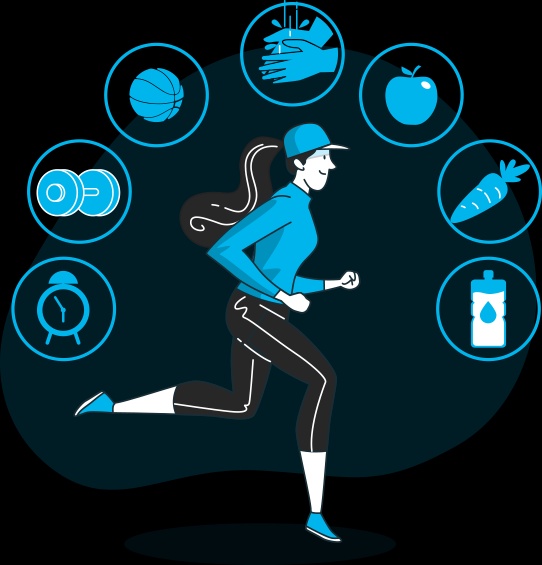Introduction:
Rapid technological advancements have had a significant impact on the healthcare industry. This has led to the rapid rise of mobile health apps (mHealth). These apps are essential in improving patient care, improving healthcare outcomes, and providing easy access to healthcare. Certain features are crucial to mHealth app success in the highly competitive market. This article examines the 10 most important features for a successful mHealth application, focusing on how they are used in mHealth app development.
Easy Navigation and User-Friendly Interface:
Navigation and user interface are two of the most important aspects of a successful mHealth application. Apps should be visually appealing, intuitive and easy to use. Clear menus, buttons, and icons will improve the user experience and make it easier for users to access information and features. Incorporating responsive design principles will also ensure compatibility with various devices including smartphones and tablet, thus expanding the app's audience.
Personalized User Profiles
The key to tailoring healthcare experiences via mHealth apps is personalization. Patients can input demographic data, medical history and preferences as well as health goals by creating personalized profiles. These data allow the app to customize recommendations, notifications, and reminders based on each individual's needs. The creation of personalized user profiles can also improve communication between healthcare providers and patients, encouraging a collaborative approach to the management of care.
Schedule appointments and receive reminders
The ability to book appointments with healthcare professionals is an essential feature in mHealth applications. The integration of a scheduling system in the app allows users to book appointments according to availability, specialization, and location. Automated appointment reminders sent via email or push notifications help to reduce the number of no-shows and increase overall appointment adherence. This feature simplifies the appointment-management process for patients as well as healthcare providers. It increases efficiency and convenience.
Telemedicine and Virtual Consultations
Modern mHealth apps are increasingly integrating telemedicine features. Virtual consultations allow patients to communicate with healthcare professionals remotely. This allows them to receive timely medical advice, diagnosis and treatment. Secure video conferencing, messaging and file sharing functionality ensures seamless collaboration and confidential communication between healthcare professionals and patients. Telemedicine improves access to healthcare for patients, while reducing healthcare costs and improving healthcare delivery efficiency.
Health Monitoring and Tracking
Apps for mHealth must include features that monitor and track health, particularly in the context of chronic disease management. Patients can monitor their progress and health status over time by including functionalities like activity tracking, vital signs monitoring, medication reminders, and symptoms logging. The integration of wearable devices, IoT technology, and sensors further enhances the data collection and analysis. Patients are empowered to make informed choices about their lifestyle and health.
Integrating Electronic Health Records into the Healthcare System:
Integrating mHealth applications seamlessly with EHR systems is essential for improving continuity and coordination of care. Healthcare providers can make informed decisions and provide personalized care when they have access to detailed patient data. This includes medical history, test and medication results, and treatment plans. Data exchange protocols that are compliant with regulations in healthcare ensure confidentiality and integrity, thereby building trust among users.
Medication Management and Reminders
The features of medication management are essential for improving adherence to medications and ensuring their safety. mHealth apps may include drug interactions alerts, dosage instructions, reminders for refills and medication databases to help patients manage medications. Customized reminders and notifications help patients to take their medications on time and reduce the chance of missing doses or making medication mistakes. Integrating with pharmacies, healthcare providers and other systems facilitates the refilling of prescriptions and delivery of medication. This is convenient for patients.
Health Education and Content Resource:
Successful mHealth applications must include educational content and resources. They provide users with information and knowledge about their conditions, treatments and prevention measures. Multimedia content, such as articles, videos and interactive tools, promotes patient engagement and health literacy. Content can be tailored based on language preferences, user preferences and health goals to improve the impact and relevance of health education. This leads to improved health outcomes and empowers patients.
Secure Messaging and Communications:
Communication between healthcare providers and patients is crucial for the coordination of care, following up on patient concerns, and answering their questions. mHealth applications should include secure messaging platforms to enable encrypted communication, real-time interaction, and file sharing. Integrating with Electronic Health Records ensures communication is relevant to the context and in line with health information. Security and privacy protocols such as user authentication and end-to-end encrypted communication protect sensitive health information and meet regulatory requirements.
Data Analysis and Insights
Ability to collect, analyze and visualize health information is a powerful feature in mHealth applications that can lead to actionable insights and decisions. Integrating data analytics allows healthcare providers track patient progress and identify trends. They can also measure outcomes. Dashboards, alerts and reports provide valuable insights to stakeholders into the health of populations, treatment effectiveness and engagement metrics. Data-driven insights allow for continuous improvement, personalized interventions and evidence-based health care delivery.
Conclusion:
Successful mHealth apps are characterized by a combination essential features, which prioritize the user experience, convenience, personalization and data security. These must-have features can help healthcare organizations improve patient engagement, improve outcomes and transform healthcare delivery by incorporating them into mHealth apps. Integrating innovative technologies and best practice into mHealth applications will be crucial in shaping the future healthcare delivery.


No comments yet